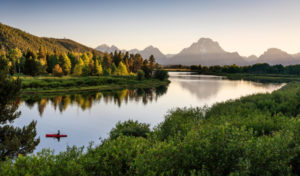
Originally posted on April 30, 2018.
You don’t have to be a billionaire to live like one. In Montana, there are billionaires who own ranches that seem like they’re the size of Rhode Island, but they don’t have a monopoly on: camping, hiking, bike riding, kayaking, fishing or skiing. Nature can be enjoyed by one and all.
As an aside, you know what’s interesting about that rural life? It is alive and well. The same is true of the suburbs. Not everyone wants to live or retire to the city life.
The resurgence by Millennials moving to the burbs is proof of that. For young families, there is something to having a backyard and playing outside with your kids.
But, back to Montana and the rural life. In her piece “Outdoor Recreation Driving Population Boom in Rural Areas,” Jen Fifield of The Pew Charitable Trusts writes:
While many rural counties have been shrinking for years, others with strong recreational industries, such as mountainous western towns where people can take a quick hike or southern states with year-round golfing weather, have been growing rapidly. These populations are growing as it becomes easier to work from anywhere, and as more people retire and move away from the city.
The trend is part of what drove the overall slight growth of the rural population in the United States from 2016 to 2017, for the first time since 2010, according to a Statelineanalysis of census data. (Rural counties are those defined by the U.S. Office of Management and Budget as outside cities and their suburbs.) The population in rural counties grew by only about 33,000 during that time, to about 46 million. While counties with large mining and farming industries shrank, counties with large recreation industries grew the most, by about 42,000, to about 6.3 million.
This includes Flathead County, Montana, and other counties with or near mountains, such as Teton County, Idaho, near Grand Teton National Park, which have seen double-digit population growth; and Eagle County, Colorado, home of ski towns Avon and Vail, which has grown 5 percent since 2010. Rural counties on the edges of suburbs, where land is cheaper and recreation is right out the back door, such as Wasatch and Summit counties in Utah, have also seen double-digit growth.
Read more here.



